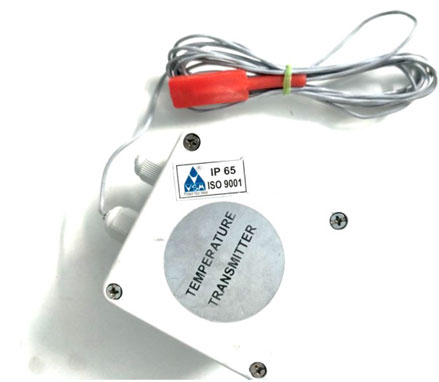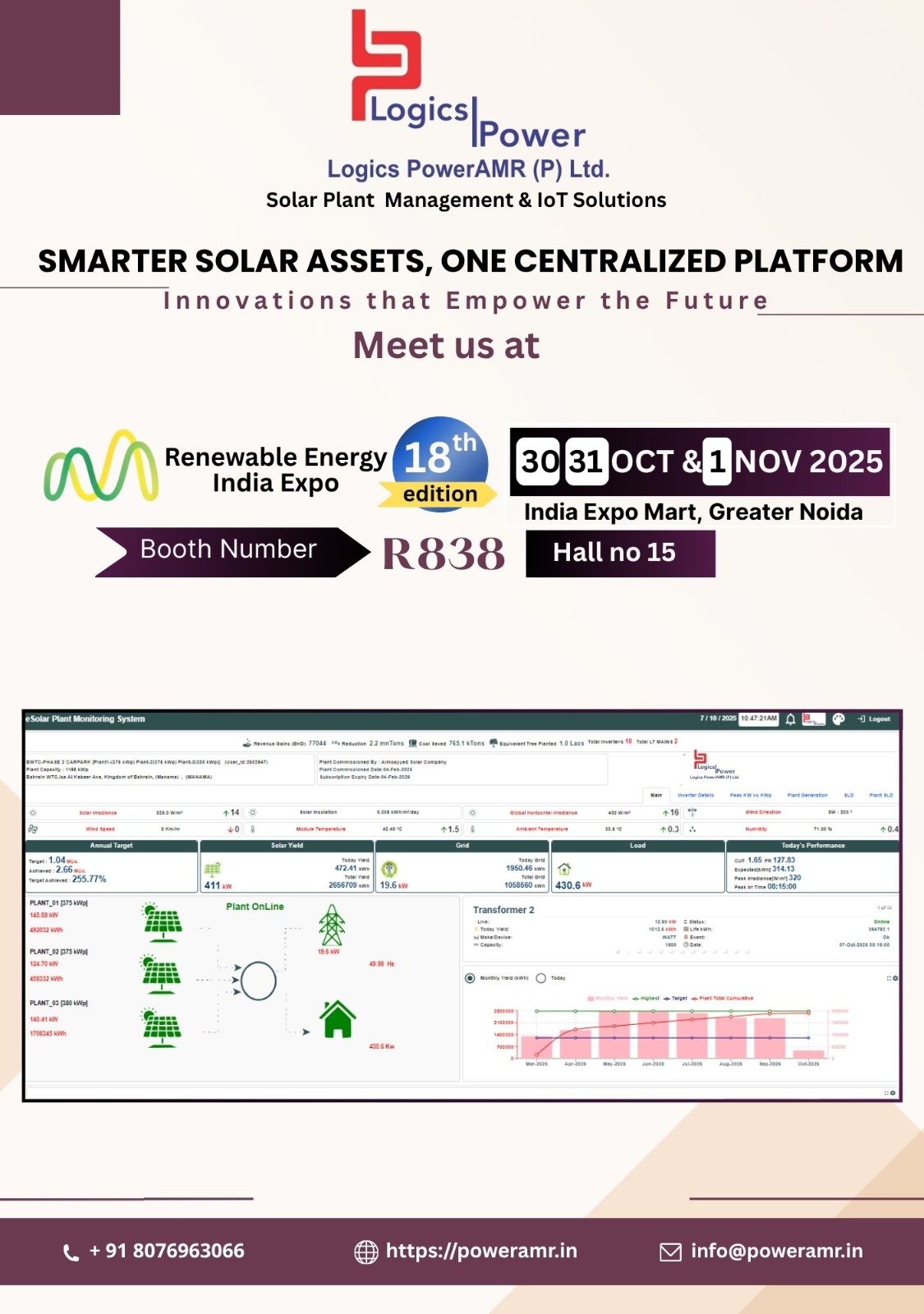High-Precision Module Temperature Sensor for Solar Power Plants
Monitoring the temperature of photovoltaic (PV) modules is essential for accurate performance analysis and long-term system reliability. A Module Temperature Sensor measures the real-time heat conditions of solar panels, and helps operators track efficiency, detect early signs of underperformance, and optimize energy yield. As a key part of solar plant monitoring, it actually ensures that fluctuations are correctly factored into power output calculations, and this makes it an indispensable tool for both rooftop and utility-scale solar installations.

Module Temperature Sensor
The Module Temperature Sensor from Logics PowerAMR is actually designed to provide accurate and reliable temperature readings directly from photovoltaic (PV) modules. This sensor monitors real-time temperature of solar panels, and helps in evaluating performance, detecting anomalies, and ensuring long-term efficiency of solar power plants.
These are actually equipped with a high-precision RTD Pt100Ω element and housed in a durable polycarbonate enclosure with IP65 protection, it is truly engineered to withstand harsh outdoor conditions. Easy to install with adhesive tape, the sensor provides seamless integration with the monitoring system, making it an essential component for effective PV system analysis and energy optimization.
Specifications
| Measuring Range : | 0 to 100 °C | Accuracy : | ±5°C |
| Sensors : Temperature : | RTD Pt100Ω | Output : | 0- 5v |
| Supply Voltage : | 12 to 24 VDC | Housing : | Poly carbonate watertight enclosure |
| Protection : | IP-65 Weight | Approx : | 150gms |
Mounting
| Select a PV module that remains non-shaded throughout the day. | |
| Peel the backing from the adhesive tape and press the sensor firmly against the surface. | |
| Do not attempt to extend or shorten the pre-assembled 2.5 m cable. | |
| The module temperature sensor is affixed to the back of the PV module. | |
| Tie the sensor cable off in a way that does not pull on the sensor | |
| It is recommended to fix the sensor and the cable with an additional adhesive tape. |


Key Features & Benefits
The Pyra 300V solar radiation sensor/pyranometer is a high quality instrument suitable for a variety of PV planning and research uses. Here are key features:
Direct panel attachment for precise monitoring: These sensors are actually designed to be mounted directly on the back of PV modules, and ensure accurate temperature measurement at the source. This also enables solar monitoring systems to capture real-time data that shows actual panel performance, and improve system diagnostics and efficiency.
Wide measuring range (0°C to 100°C): With a broad temperature range, the sensor effectively measures panel condition under varying climates and operating environments. From extreme cold to high-heat conditions, it actually delivers consistent readings that help solar plant operators optimize power generation and reduce efficiency losses.
Highly accurate RTD Pt100Ω sensor: These sensors are actually equipped with a platinum RTD Pt100Ω element. It offers high precision along with stable output. Now, this accuracy is essential for monitoring the performance of PV, assessment of energy yield, as well as identifying early signals of overheating, or even underperformance in solar panels.
Durable polycarbonate watertight enclosure (IP65 protection): Built to last, the module temperature sensor comes in a rugged polycarbonate enclosure with IP65 protection, ensuring resistance against dust, moisture, and outdoor wear. This makes it highly reliable for long-term use in solar farms and rooftop installations.
Easy adhesive-based installation, no drilling required: The sensor uses high-strength adhesive tape for simple and secure installation on PV modules. With no drilling or panel modifications needed, it reduces installation time and ensures a firm bond for precise data collection without compromising module integrity.
Optimized for long-term outdoor reliability: Our sensors are actually designed for renewable energy systems, the sensors are perfectly built to withstand prolonged outdoor exposure and continuous operation. Its reliability ensures uninterrupted data collection, and this truly makes it a reliable tool for solar monitoring solutions in both utility-scale and rooftop solar projects.
Why Choose Logics PowerAMR Module Temperature Sensor
Accuracy you can rely on: Equipped with a high-quality RTD Pt100Ω element, it delivers precise and consistent temperature readings, and helps ensure your solar performance data is always reliable.
Engineered for solar: Purpose-built for PV modules, this sensor enables continuous tracking of real-time module temperature, and supports accurate efficiency analysis and long-term solar energy yield optimization.
Weatherproof design: These are actually housed in durable polycarbonate with IP65 protection, and withstand outdoor challenges such as dust, rain along with UV exposure, ensuring dependable operation year after year.
Effortless integration: Designed for hassle-free compatibility, the sensor connects smoothly with monitoring platforms and data loggers, and this makes installation and performance tracking seamless.
Trusted technical support: Every sensor comes backed with detailed datasheets, installation guidance, along with responsive technical assistant, and ultimately ensures customers truly get maximum value and confidence in their monitoring systems.




